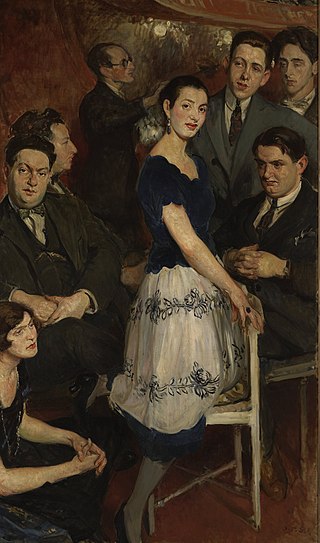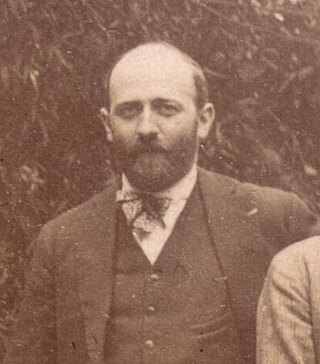Related Research Articles

"Les Six" is a name given to a group of six composers, five of them French and one Swiss, who lived and worked in Montparnasse. The name has its origins in two 1920 articles by critic Henri Collet in Comœdia. Their music is often seen as a neoclassic reaction against both the musical style of Richard Wagner and the Impressionist music of Claude Debussy and Maurice Ravel.

Roger Désormière was a French conductor. He was an enthusiastic champion of contemporary composers, but also conducted performances of early eighteenth century French music.

Henri-Pierre Sauguet-Poupard was a French composer.
Alice Theresa Hildagard Swanson Esty was an American actress, soprano and arts patron who commissioned works by members of Les Six and other French composers, and American composers such as Ned Rorem, Virgil Thomson. Claire Brook, and Marc Blitzstein, among others.

Alexis Fernand Félix Jean Rivier was a French composer of classical music in the neoclassical style.

Marcelle Meyer was a French pianist. She worked with a group of composers known as Les Six, of whom she was the favored pianist.
Georges Samuel Tzipine was a French violinist, conductor and composer. He was of Russian-Jewish origin.
This is an incomplete list of plays for which incidental music has been written.
In classical music, it is relatively rare for a work to be written in collaboration by multiple composers. This contrasts with popular music, where it is common for more than one person to contribute to the music for a song. Nevertheless, there are instances of collaborative classical music compositions.
The following is a chronological list of classical music composers who lived in, worked in, or were citizens of France.
La Guirlande de Campra is collaborative orchestral work written by seven French composers in 1952. It is in the form of variations or meditations on a theme from André Campra's 1717 opera Camille, reine des Volsques.
Known by several names, including 'Comité de Front national des musiciens', the Front national des musiciens was an organisation of musicians in Nazi occupied France that was part of the French Resistance set up at the instigation of the French Communist Party, in May 1941. Active until the autumn of 1944, the group's most prominent members were composers Elsa Barraine and Louis Durey, and conductor Roger Désormière.

Paul Derenne was a French tenor whose eclectic repertoire allowed him a successful career on stage and on the concert platform.
L'Album des Six is a suite of six piano pieces published in 1920 by Eugène Demets, and written by the members of the group of French composers known as Les Six.
Camille, reine des Volsques is an opera by the French composer André Campra, first performed at the Académie Royale de Musique on 9 November 1717. It takes the form of a tragédie en musique in a prologue and five acts. The libretto, by Antoine Danchet, is based on Virgil's Aeneid and concerns the Volscian queen Camilla.
Doda Conrad was a Polish-born American bass operatic singer.
Yvonne Gouverné, née Yvonne Marcelle Gouverné, was a 20th-century French pianist by training, who went on to become an accompanist and choir conductor.

Nadia Tagrine was a Franco-Russian classical pianist.
Billy Eidi is a French classical pianist of Lebanese background.

Suzanne Jeanne Marie Peignot, was a French soprano, a privileged interpreter of the group Les Six. Her friends nicknamed her la Reine des mouettes, an allusion to one of the melodies she successfully sang. As for him, Erik Satie had nicknamed her ma très petite da-dame.
References
- ↑ Cecilia Dunoyer, Marguerite Long: A Life in French Music, 1874-1966, p. 186. Retrieved 17 May 2016
- ↑ "Notes from Abroad". The Musical Times . 97 (1361): 380–382. 1956. doi:10.2307/937734. JSTOR 937734 . Retrieved 2022-01-09.
- ↑ D. Kern Holoman, Charles Munch. Retrieved 17 May 2016
- ↑ Carl B. Schmidt, The Music of Francis Poulenc (1899-1963): A Catalogue. Retrieved 17 May 2016